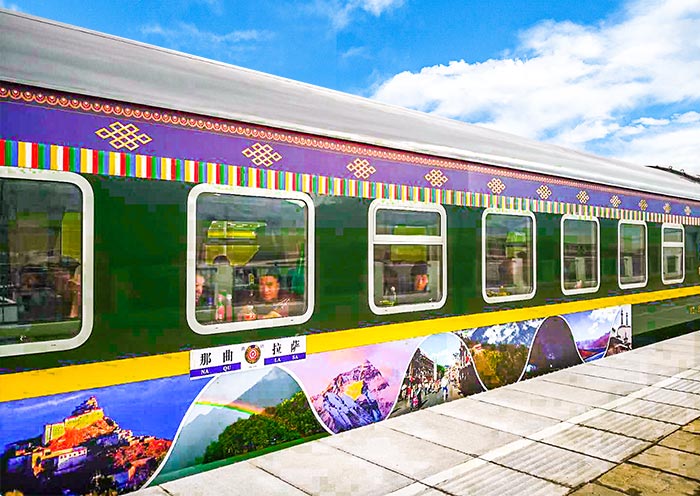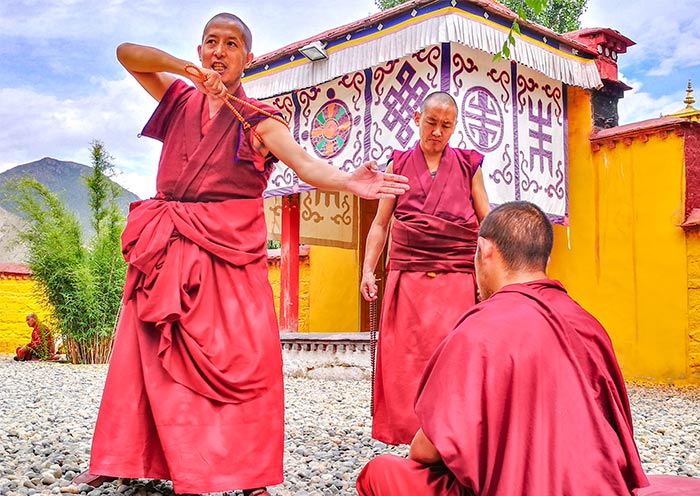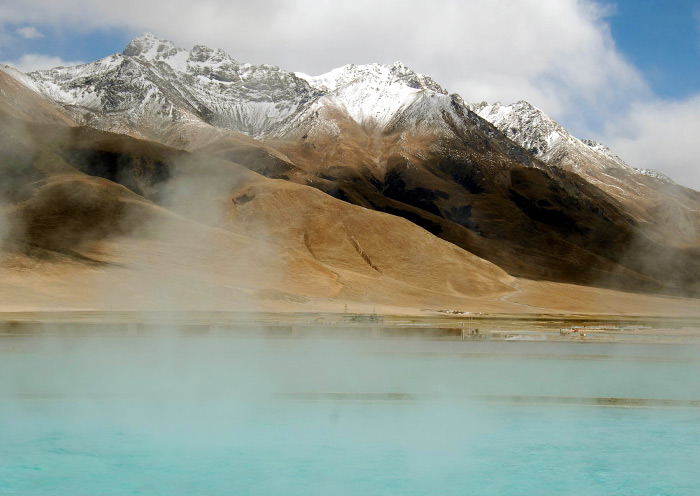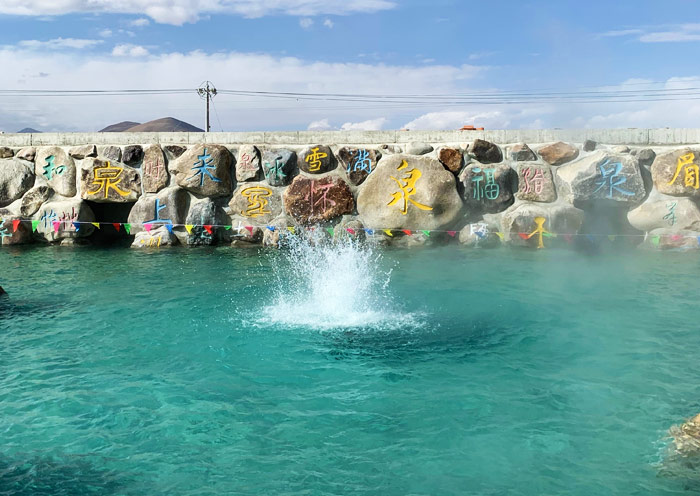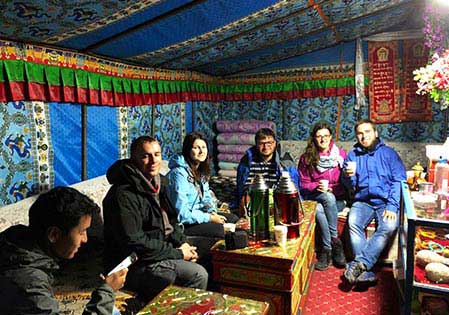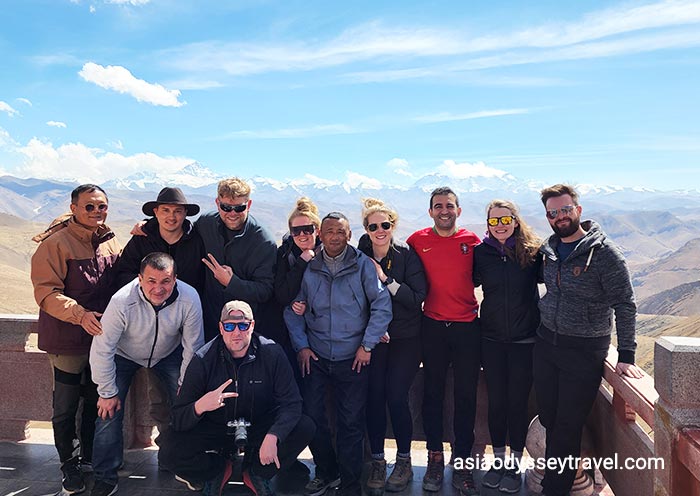Camping Altitude: 4500m | Distance: 76km | Duration: 2 hours’ drive
On this day, drive about 2hours (76km) from Lhasa to Tsurphu Monastery (4,500m) via the Qinghai-Tibet Highway. The road to the monastery is picturesque, winding its way through lush green valleys. Along the mountain river, you will pass many Tibetan camping tents. In the afternoon, you can pay a visit around the Tsurphu Monastery, have a good rest and get used to the altitude. Overnight at Tsurphu monastic guesthouse or camping around Tsurphu Monastery.
The Tsurphu to Yangpachen Trek is a well-known, mature trekking route in Tibet that starts from Tsurphu Monastery. This route is medium difficulty and perfect for those who enjoy hiking but are not experts. You will be supported by a Tibetan local guide, an experienced porters, and hard-working yaks or horses.
Lies deep in the valley, Tsurphu Monastery is located 76 kilometers from Lhasa at an altitude of 4,500 meters. Dating back to the 11th century (over 800-year-old), it is a gompa that served as the traditional seat of the Karmapa, the head of the Karma Kagyu lineage of Tibetan Buddhism. Every year, during the 9th, 10th, and 11th days of the 4th Tibetan month (around May), people come to celebrate the Saga Dawa festival by performing ritual cham dancing and unfurling a great Thangka on the platform across the river from the monastery. Tsurphu Monastery is the place where the living Buddha reincarnation system of Tibetan Buddhism began. Now it is also the residence of the current living Buddha Karmapa, the reincarnated lama of the Kyigyapa sect of Tibetan Buddhism.
Notes for Tsurphu to Yangpachen Trek:
1. Late May to early October is the best season to do the Tsurphu to Yangpachen Trek. During this season, the weather is good and warm while avoiding snow that blocks the road.
2. It is advisable to avoid coming during the rainy season in July and August, as the roads can be muddy and difficult to navigate.
3. Due to the high altitude, it is advisable to undergo a physical examination before traveling to Tibet.
4. There is a significant temperature difference between day and night in Tibet, and the ultraviolet rays can be very strong. Therefore, it is important to bring warm clothes and sunscreen to protect yourself from the harsh weather conditions.









